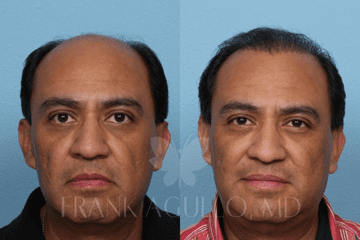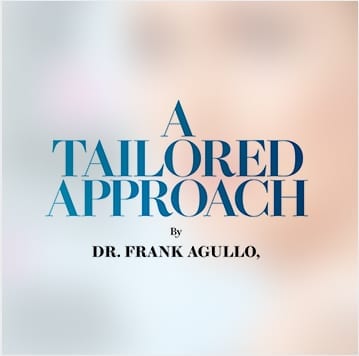If you are one of the many who struggle with hair loss, and your self esteem is affected by hair loss, there are options available to reclaim that confidence.
Hair Loss in Men
Men invariably experience some level of hair loss as they grow older. About 12% of men in their late 20s experience hair loss. This figure is significantly higher for older men; those in their 50s have a more than 50% chance of showing signs of some hereditary baldness.
Psychological Effects of Male Hair Loss
Hair loss in men has varying degrees of psychological effects. At Southwest Plastic Surgery we work with many of these whose personal, professional and social lives are significantly affected by the hair loss. In addition to delivering first-rate hair transplant, we offer support during the planning and recovery stages of hair restoration.
Causes of Male Hair Loss
Genes
The biggest reason for hair loss in men is Androgenetic alopecia (AGA), simply known as male pattern baldness. 35 – 40 million men in the US are affected by AGA. There is no single progression rate of AGA as different men experience it at different speeds.
AGA is brought about by the male hormone dihydrotestosterone (DHT). The DHT is effective on hair follicles that have hereditary vulnerability. The effects of DHT are reflected in the reduced size of the hair follicles which then produce shorter, thinner hair until they stop producing hair altogether.
Although it is widely assumed that hair loss is inherited from the ‘mother’s side of the family’, it can actually be inherited from any of the parents.
Hormones
In addition to genes, hormones play an important role in male hair loss. These are biochemical substances, the most important one called testosterone which is developed in the testicles after puberty. It’s interesting to note that while these hormones cause, among other things, the growth of hair on the face, they cause hair loss on the scalp.
Age
Age is an important factor in hair loss. Males who have the hair loss genes will usually not experience hair loss in early age. The actual age of the onset of male pattern baldness varies from one person to the other. An interesting and widely unknown aspect of male hair loss is that it does not progress in a constant pace. Instead, it is a cyclic pattern with varying speeds of hair loss but invariably it speeds up with age.
Classification of Male Hair Loss
There are two main types of male pattern baldness as classified the widely accepted “Norwood classification” by Dr. O’tar Norwood.
Regular Norwood Pattern
Under this pattern the baldness has two ‘points’ of origin. One is at the crown of the scalp. The other is entire front hairline which has a bi-temporal recession.
Norwood Class A
Under this type of baldness, the hair loss progression is simply front to back. This is coupled with a general thinning of the crown. Please see the illustration below.
Diffuse Patterned/ Unpatterned Alopecia
These two types of hair loss are less common. In both Diffuse Patterned Alopecia (DPA) and Diffuse Unpatterned Alopecia (DUPA), the hair loss begins and progresses across the front, top and crown of scalp together. In DUPA, the sides of the scalp experience major thinning as well. Please see the illustration below.
It is often not considered by doctors, and is relatively difficult to diagnose. Our hair transplant specialists aptly identify and differentiate cases of both DPA and DUPA. This differentiation is crucial because people with DPA are good hair transplant candidates while those with DUPA are not.
Treatment of Male Hair Loss
Treatment options for male pattern baldness include:
- Medication
- Therapy
- Surgical Restoration
- Cloning
Non-Surgical
Hair loss medication is designed to prevent hair loss progression and can be used as part of a solution that includes surgical restoration/hair transplant. We prescribe hair FDA approved & proven medications such as Rogaine (minoxidil) and Propecia (finasteride). We also perform low-level laser therapy (HairMax) as another non-surgical treatment option.
Surgical
While hair cloning still has to overcome some issues, hair transplant is the only practical way to restore hair in bald scalp areas. Southwest Plastic Surgery’s accomplished hair transplant specialists are well-versed in surgical hair loss treatments. We administer different transplant procedures such as Follicular Unit Transplantation (FUT) and Follicular Unit Extraction (FUE).
Cost for Male Hair Loss Treatment
Pricing varies depending on the extent of the treatment or surgery. You can see a list of the approximate prices of each procedure on our current fee schedule. Generally speaking, cosmetic plastic surgery is considered “elective” and is not covered by most insurance plans. The prices listed on our fee schedule represent the minimum cost of the procedures, including anesthesia and surgical facility fees, medical tests, garments, and recovery products. The cost of prescription medications, however, is not included. The exact price of each procedure can only be determined after a thorough consultation. All fees must be paid in full prior to the scheduled treatment.
#HappyIsBeautiful
Schedule a risk-free evaluation with Dr. Frank Agullo today.




